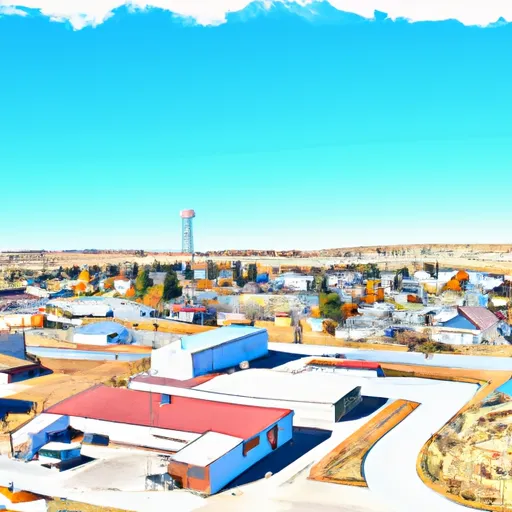-
 Snoflo Premium
Snoflo Premium
Get unlimited access to all our content
With no Ad interruptions! - Start Your Free Trial Login with existing account
Lance-Creek
Eden Index
Climate
7.7
•
Recreation
•
Community
•
Safeguard
3.1/10

Lance Creek is a small unincorporated community in eastern Wyoming, situated in Niobrara County. It experiences a semi-arid climate characterized by hot summers and cold winters. Summers are typically dry with temperatures averaging in the high 80s°F (around 31°C), while winters see below freezing temperatures and occasional snowfall.
The hydrology of Lance Creek is influenced by the nearby Lance Creek, a tributary of the Cheyenne River. This water source provides important irrigation for local agriculture and supports a diverse range of wildlife. The area is also known for its fossil-rich formations, including the Lance Formation, which has yielded numerous dinosaur fossils.
Outdoor enthusiasts can enjoy various recreational opportunities in the surrounding area. The nearby Niobrara County State Park offers camping, hiking, fishing, and wildlife viewing opportunities. Hunters can explore the vast public lands for game hunting. The area's scenic beauty provides ample opportunities for photography, birdwatching, and nature exploration. With its diverse landscape and natural wonders, Lance Creek attracts visitors seeking to immerse themselves in Wyoming's outdoor splendor.
What is the Eden Index?
The Snoflo Eden Index serves as a comprehensive rating system for regions, evaluating their desirability through a holistic assessment of climate health, outdoor recreation opportunities, and natural disaster risk, acknowledging the profound impact of these factors on livability and well-being.
Climate Health Indicator (CHI): 7.7
Lance-Creek receives approximately
356mm of rain per year,
with humidity levels near 72%
and air temperatures averaging around
9°C.
Lance-Creek has a plant hardyness factor of
4, meaning
plants and agriculture in this region thrive during a short period during spring and early summer. Most
plants will die off during the colder winter months.
By considering the ideal temperature range, reliable water supplies, clean air, and stable seasonal rain or snowpacks, the Climate Health Indicator (CHI) underscores the significance of a healthy climate as the foundation for quality living.
A healthy climate is paramount for ensuring a high quality of life and livability in a region, fostering both physical well-being and environmental harmony. This can be characterized by ideal temperatures, reliable access to water supplies, clean air, and consistent seasonal rain or snowpacks.
Weather Forecast
Streamflow Conditions
Cheyenne
Area Rivers
Cheyenne
Snowpack Depths
Cheyenne
Reservoir Storage Capacity
Cheyenne
Groundwater Levels
Recreational Opportunity Index (ROI):
The Recreational Opportunity Index (ROI) recognizes the value of outdoor recreational options, such as parks, hiking trails, camping sites, and fishing spots, while acknowledging that climate plays a pivotal role in ensuring the comfort and consistency of these experiences.
Access to outdoor recreational opportunities, encompassing activities such as parks, hiking, camping, and fishing, is crucial for overall well-being, and the climate plays a pivotal role in enabling and enhancing these experiences, ensuring that individuals can engage in nature-based activities comfortably and consistently.
Nearby Fishing
Nearby Ski Areas
Catastrophe Safeguard Index (CSI):
The Catastrophe Safeguard Index (CSI) recognizes that natural disaster risk, encompassing floods, fires, hurricanes, and tornadoes, can drastically affect safety and the overall appeal of an area.
The level of natural disaster risk in a region significantly affects safety and the overall livability, with climate change amplifying these risks by potentially increasing the frequency and intensity of events like floods, fires, hurricanes, and tornadoes, thereby posing substantial challenges to community resilience and well-being.
Community Resilience Indicator (CRI):
The Community Resilience Indicator (CRI) recognizes that education, healthcare, and socioeconomics are crucial to the well-being of a region. The CRI acknowledges the profound impact of these elements on residents' overall quality of life. By evaluating educational resources, healthcare accessibility, and economic inclusivity, the index captures the essential aspects that contribute to a thriving community, fostering resident satisfaction, equity, and social cohesion.

